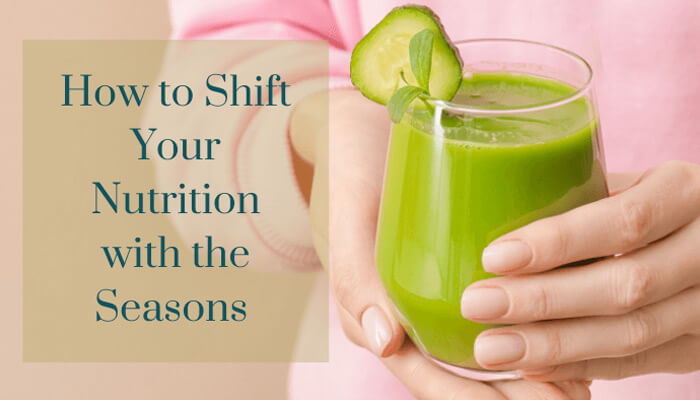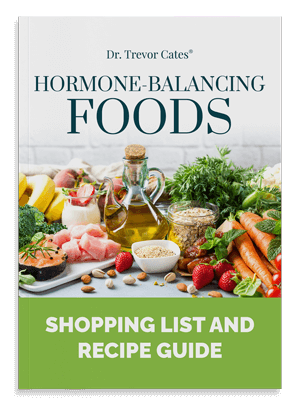When the seasons change, it’s not just the external changes outdoors that have an impact on our lives. Internal influences have a big impact on our well-being, and we may not even realize it.
As the seasons change, your hormones change too. For example, the hormone melatonin is higher during the fall and winter months. This is because there is less daylight and melatonin responds to light levels. Serotonin, the “happy hormone,” may also decrease during these same seasons due to a lack of sunlight.
Resetting your diet with the changing seasons is a wonderful way to guide your body through the changes you’ll experience. Adjusting your eating habits with every new season is a simple way to support the changes your body is going through – and a wonderful way to support balance and harmony.
Spring Foods
Most of us spring clean our homes, so why not also spring clean your body? Spring is the perfect time to cleanse your body, especially since a lot of people tend to eat more in the winter months. This is because when the temperature drops outside, it stimulates our appetite to generate heat. Being surrounded by holiday foods also triggers more eating.
Because of this, spring is the ideal time to get a nutritional boost and start weaning yourself off eating cold-weather produce like root vegetables and other heavy foods. This will help hit the reset button on your metabolism and hormones. If your environment is still cool at the beginning of spring, switch to steamed vegetables to make this transition easier.
Keep meals simple and clean. Load your plates with local produce, such as sprouts and greens depending on where you live. This will help stimulate digestion. As the temperature warms up, add seasonal produce such as apricots, cherries, arugula, dandelion greens, peas, and cashews.
Summer Foods
Who doesn’t love long, summer days? Most of us spend more time outdoors in the summer months. As a result, our mood is better compared to other times of the year. We’re exposed to more sunlight and it’s easier to get the Vitamin D we need.
A big perk of the summer is that it’s a prime growing season for nutrient-rich produce. It’s also a great time to eat fish. Trout and wild salmon are the best to eat in the late spring and
through the summer – and you’ll get those skin- and heart-loving omega-3 fatty acids. Summer is also a great time to eat cooling foods like watermelon, cucumbers, and parsley. Enjoy cool water and iced herbal teas to keep your body’s internal temperature balanced – or this watermelon gazpacho recipe!
Another tip for summer is to shop at your local farmers’ market to buy the freshest, in-season produce near you. Talk to the people working at the market booths. Ask them about their farming practices and how they process meat and if it is grass-fed. And if you love cheese and can tolerate dairy, this is the perfect time to seek out goat and sheep cheese.
Fall Foods
Fall is a cozy time of year when we stop the hustle and bustle of summer and settle into a slower pace. There’s less sunlight and from a food perspective, we head into the harvest season. Fall produce prepares us for winter – it’s the perfect time to eat more nutritionally dense foods to support immune health.
During this time of year, there’s less sunlight daily, so it’s also the time when our eating habits need to support this change. Grains are the freshest in the fall months, as they’re usually harvested in late summer and into fall. This includes corn, basmati rice, and quinoa. And if you’re looking for a way to prepare quinoa, here’s one of my favorite recipes.
Many vegetables are abundant and in season during the fall months, including carrots, cauliflower, parsnips, edamame, pumpkins, sweet potatoes, and Brussels sprouts. Fall also brings some seasonal fruit favorites, such as apples and cranberries.
Winter Foods
Winter is a challenging time for many people because it’s the darkest time of the year, especially if you live in a northern latitude. Sometimes depression settles in and motivation can wane. And when the temperature drops, it’s time to eat nourishing and warming foods to support digestion.
First up are grains. Grains such as oats, barley, and quinoa are easy to store in cool and dry locations. Use them to make hearty breakfast bowls, a lunch salad, or a dinner side dish. Depending on where you live, produce is more of a challenge in the winter months. Fruit can be hard to come by. Choose seasonal fruits as close as possible to where you live for freshness and the most nutrients.
Root vegetables like parsnips, potatoes, and rutabaga are good choices in the winter because they tend to last longer after being harvested. Winter is also a good time to get many types of meat at their freshest, such as venison, rabbit, salmon, and quail.
Having awareness about what foods are in-season where you live can have a big impact on your mood, skin, hormones, and overall health. Making a conscious effort to select supportive foods throughout the year can help you stay balanced.
My next book, Natural Beauty Reset, explains in much more depth how you can nourish your body and support your health and hormones through the seasons. And you can pre-order my book now on Amazon. I can’t wait to see what you think about it.



